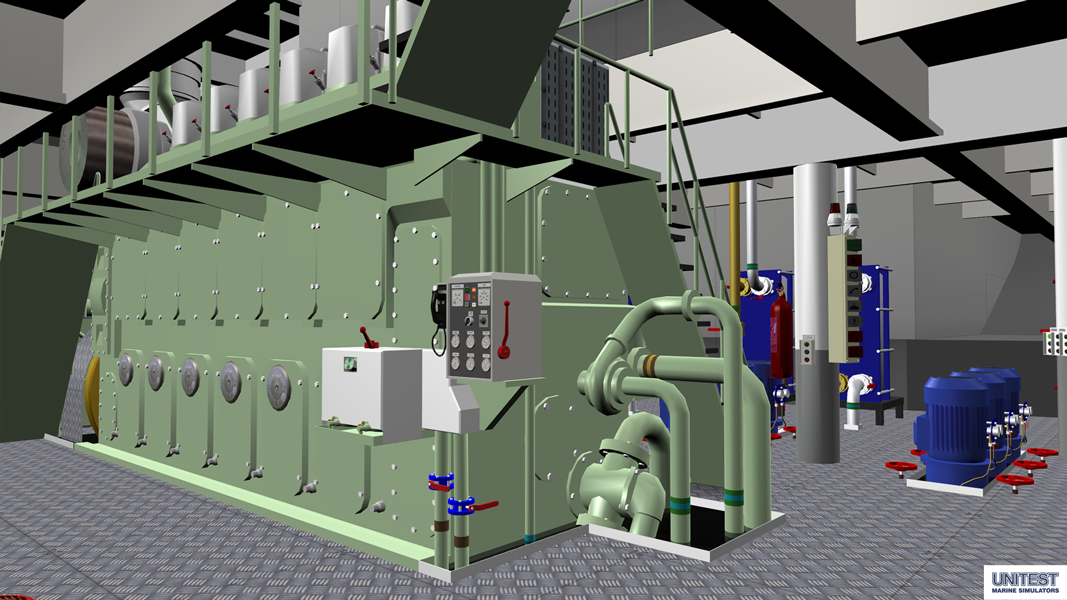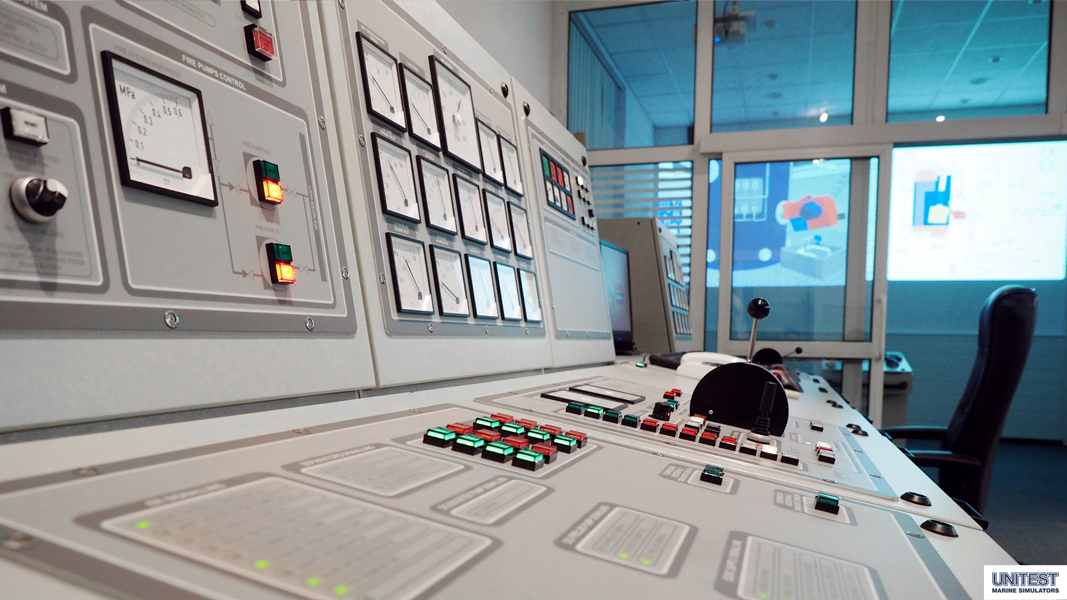Full Mission Engine Room Simulator










The UNITEST full mission engine room simulator is based on very modern solutions, which are presently used in medium-sized, computer-controlled engine rooms. The engine room simulator can operate with two (2) models of propulsion plants: a medium speed (one four-stroke type main engine with reduction gear and controllable pitch propeller) and a low speed (one two-stroke type main engine with fixed pitch propeller).
The simulator provides a realistic, ship-like environment based on real hardware consoles and high quality 3D presentation. The systems include vital components, such as main engine local and remote control, engine telegraphs, engine room local panels, integrated automation system, etc.
The full mission simulator provides a new approach to navigation through the different systems’ elements, allowing for an easy and quick access to basic engine room operation (valve opening and closing, setting position of switches, push-buttons, etc.). This is possible due to the application of state-of-the art 3D visualisation with zoom function.
The latest development also includes a combination of 3D and 2D diagram presentation, which enables to follow how a certain device really functions and gives a complete picture of its structure.
The presented solutions have improved considerably the level of simulator fidelity in comparison to real machinery. In consequence, it was possible to eliminate the disadvantages of the engine room simulator with typical 2D presentation consisting of a schematic and simplified presentation of machinery systems.
This simulator is designated for training students of maritime academies as well as different types of marine vocational training centres. The simulator has universal features and may be used both for training merchant and navy fleet crew.
The simulator consists of three (3) main elements:
- Engine Control Room (ECR) with main engine control console and main electric switchboard,
- Engine Room with two (2) PC projectors and control console for 3D visualization combined with diagram presentation,
- Instructor Room.
The main engine’s starting and stopping procedure is effectuated on hardware type control consoles and Electric Switchboard panels.
The basic operation with auxiliary sub-systems is performed by clicking on the PC screen, just as on a real modern ship. Diagrams related to specific installations, like fuel oil, compressed air system, cooling system, lubricating system, steam system, etc., are presented on the PC screen. For security reasons, the Engine Control Room is equipped with two (2) identical PCs with monitors. In case of one PC failure, the second one takes over the systems’ control automatically. On the screen and with just one mouse click, it is possible to start and stop the pumps, compressors as well as open and close the valves which are remotely controlled.
All operating procedures which are necessary to perform in engine rooms (outside of Engine Control Room) are effectuated in a separate room equipped with two (2) projected screens.
One screen presents the engine room elements is 3D visualization and another one in form of a diagram related to specific and selected compartments of engine rooms, for example auxiliary generators’ room, emergency generator’s room, compressed system room, etc. The selection of engine room’s elements, that are important from exploitation point of view, is performed by zoom function.
The main purpose of the MED3DH simulator is the practical preparation of the trainee for engine room operation, in particular:
- familiarization with the basic engine room installation (compressed air system, fresh and sea water cooling system, lubricating, fuel oil system, etc.), especially taking into account training on the base of modern, computer-controlled engine room;
- acknowledgment with main engine and auxiliary equipment exploitation procedures;
- propulsion system manoeuvring (main engine – reduction gear – CPP).
The full mission simulator has been equipped with hardware consoles and panels that enable the operation and control of main engines, gear, CPP, auxiliary machinery and electric systems.
